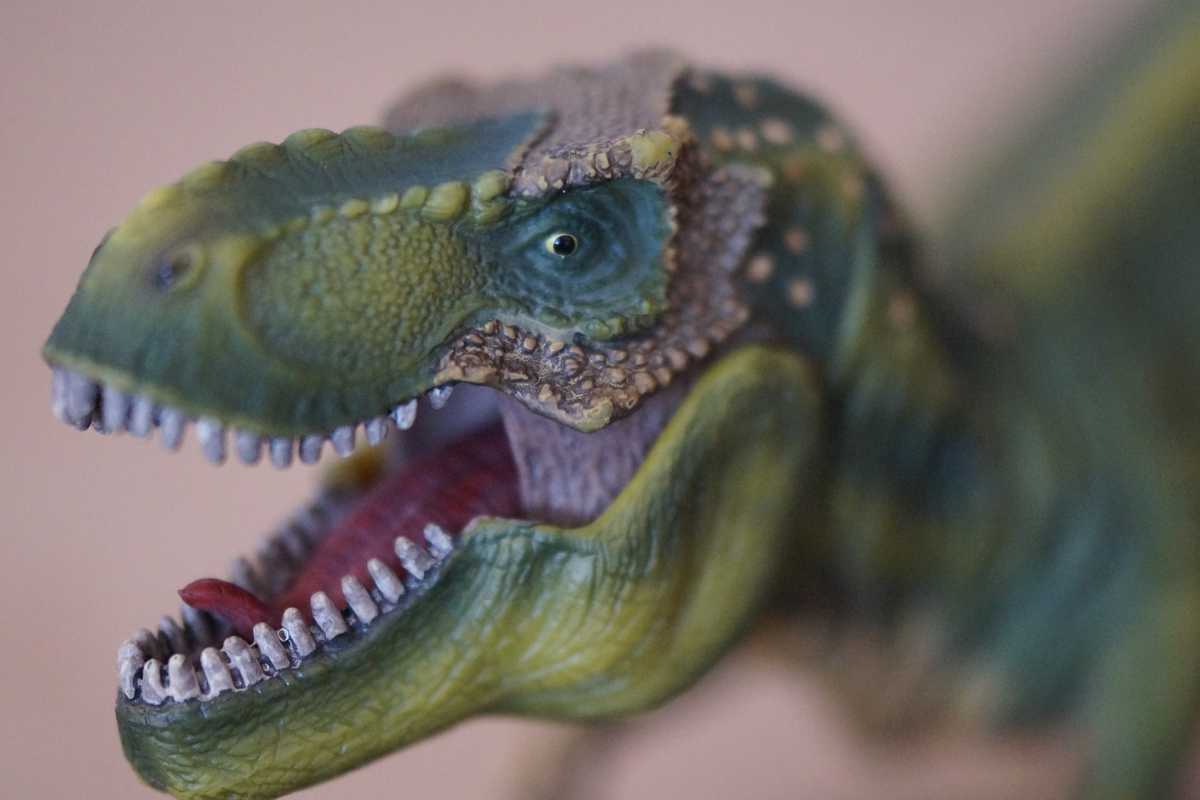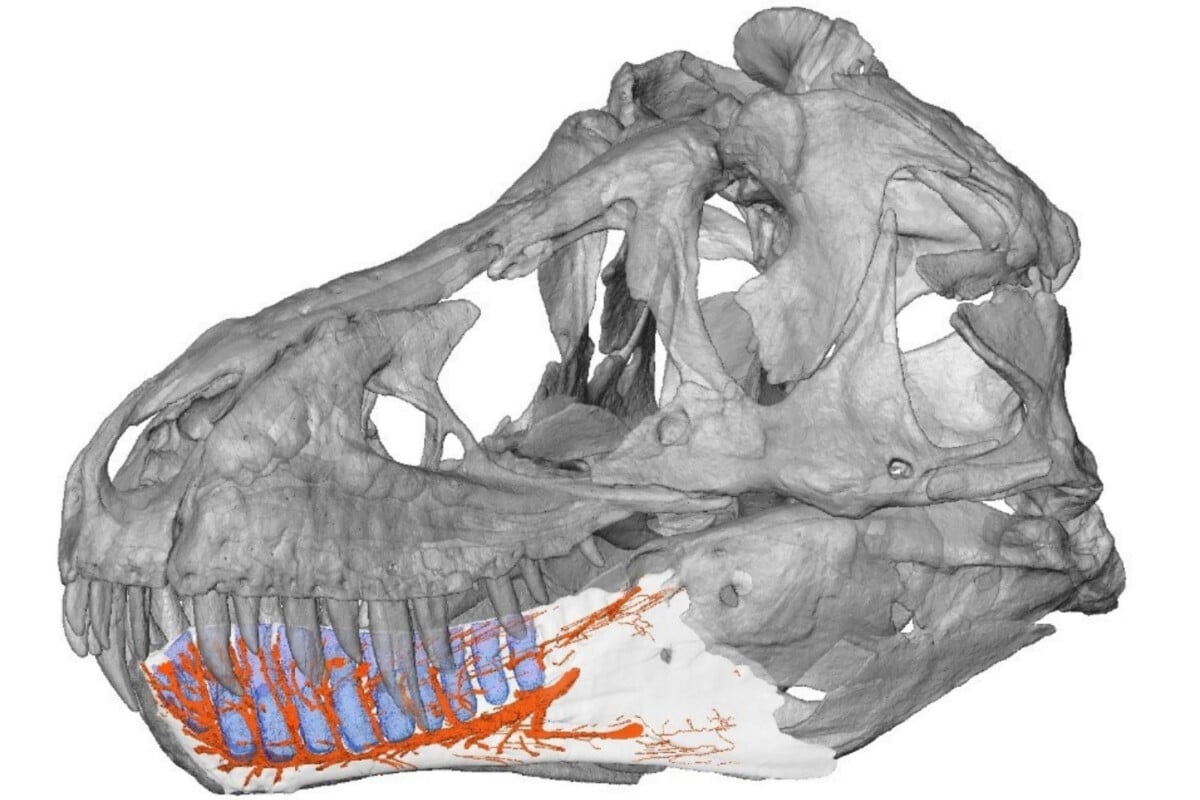
Nerves in the ends of its jaw probably made the huge dinosaur even better able to detect and eat its prey.
So say Japanese researchers after taking a closer look at the jaws of the famous carnivorous dinosaur. Their findings can be found in the magazine Historical Biology.
The research
The researchers studied a fossilized jaw of a Tyrannosaurus Rex which has been found in modern-day Montana. Using CT scans, they visualized the internal structure of the jaw. They then compared it to the insides of the jaws of crocodiles, birds and other dinosaurs such as Triceratops to better understand the imaged structure.
Results
“The study reveals the presence of neurovascular channels with complex branches in the mandible of the Tyrannosaurus,” said study researcher Soichiro Kawabe. “Especially at the front. And it is believed that a similar complex branching of neurovascular channels was also present in the maxilla.”
Sensitive jaws
It points out that the T. rex had quite a complex network of nerves in the jaws. Much more complex than what researchers have seen in other dinosaurs to date, and roughly comparable to what we see in modern-day crocodiles and some birds. “What this means is that T. rex was sensitive to small differences in material and movement,” says Kawabe. “It indicates that the dinosaur was able to recognize the different parts of its prey and eat it differently.”

Possibly the nerves (in orange) were widely distributed over the lower jaw of the T. rex.
It changes our view of the carnivorous giant. T. rex was not a dinosaur with callous jaws that would just bite into everything and everyone. Instead, the dinosaur’s jaws were equipped with nerves that allowed it to better detect its prey and eat it more efficiently. “T. rex was an even more terrifying predator than previously thought,” concludes Kawabe.
But the T. rex did not only sow death and destruction with his sensitive jaws. It is possible that the nerves in its jaws also enabled the dinosaur to perform more sophisticated tasks, such as building a nest and caring for the young.
Source material:
“T. rex’s jaw had sensors to make it an even more fearsome predator, new digital study finds” – Taylor & Francis Group
“Complex neurovascular system in the dentary of Tyrannosaurus” – Historical Biology
Image at the top of this article: MW from Pixabay